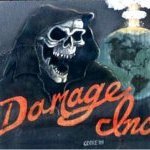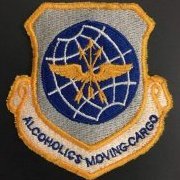
Quixote74
Members-
Content Count
507 -
Joined
-
Last visited
-
Quixote74 started following Question about the Mitsubishi F-2 and is it rated to carry the AGM-88 HARM?, F-16AM Block 20 Tail, Input please! Best 1/72 X-1 and X-15A2 and 6 others
-
In addition to PWMP, a 1:32 Block 15/20 F-16A tail was produced by KASL out of Taiwan. There is at least one currently listed on the Bay of E. If availability and/or price are issues for the resin conversions, converting an extended tail fairing from an F-16C/D (e.g. Academy kit optional parts) is similar to the A/B tail - main difference is the C/D fairing is wider. A "cut and shut" modification should get you pretty close.
-
Possibly the "one other" X-1 in 1:72 worth mention is the Hobbycraft. It isn't as detailed and has fewer features than the Tamiya/Hobby Spot, but generally less expensive by a lot. If going that route look for the "Black Box" release, as it has vastly superior decals (better even than Tamiya's). The Tamiya kit also comes with a somewhat retro-cool clear fuselage half option, allowing you to build a 3D cutaway style showing full interior with engines.
-
What are the primary (external) differences between the F-15B and F-15D
Quixote74 replied to BWDenver's topic in Jet Modeling
The F-15I nozzles should be the same as for any feathered F100-engined Eagle, but I believe an F-15K nozzle would depend on which batch they're representing since the early airframes had GE F110s before the later deliveries reverted to F100s. Assuming Resikit offers "I/K" nozzles as a single product, I'm sure they are for the F100. -
What are the primary (external) differences between the F-15B and F-15D
Quixote74 replied to BWDenver's topic in Jet Modeling
The "big picture" answer to your question depends on the production block of the B-model, and to some extent the timeframe. The earliest A & B models had a short dorsal airbrake, later revised to what became standard length but with an external 'spine,' and then the final "smooth" variety (the underside of those have further variations). The NASA Quiet Spike airframe (74-0141) has the full-length smooth brake. In addition to different wheel hubs, most - maybe all - A/B models had the "turkey feather" exhaust panels installed at manufacture, most of which were removed starting -
I suspect a lot of folks interested in a 1:72 Whale may also have all or parts of the OOP Cutting Edge conversion sets stashed away to assist with the "Version" types. As those were also among the more interesting markings - and longest serving variants - it seems unwise to exclude them just because building them accurately involves some extra work. Personally I would love to see any of the EA-3Bs from their 1980s-1990s carrier deployments. Those markings are also generally limited, so potentially more options on a sheet.
-
A small number of subjects from the vintage Microscale/Superscale line have been redone and are still currently available from the current incarnation of their original source: https://www.microscale.com Look under "Military Decals" -selection is certainly sparse compared to their vintage catalog, but they have several sheets for USAF F-4Es and also offer data sheets for both SEA and gray schemes.
-
I'm assuming you're referring to the 'collar' portion forward of the nozzle 'petals'? AFAIK this shouldn't be different on the B/N from what was previously available for the C-model kits. It does look like that particular test build has the nozzles a little too far out of the fuselage, but this should be an adjustable fit if it matches the way these actually operate - @tailspin turtle's blog documents this well: https://tailspintopics.blogspot.com/2012/12/j79-exhaust-nozzles.html?m=1
-
Not sure what your definition of "medium sea gray" may be, but the upper color of the Tu-22M3 is very close to FS36320, commonly known as "dark ghost gray." This is based on having seen a Ukrainian Tu-22M3 in person at the 2000 RIAT at RAF Cottesmore (other than national insignia and markings, the Ukrainians did not change the colors from the original USSR scheme). The underside white probably looks "aged" by virtue of lighting and shadows than the actual paint color. I would suggest doing a paint test (ideally on a paint mule so you can change lighting/orientation) to check how A
-
Two words: Woo Hoo! 😄
-
Not sure if you need primary sources or what the protocol is for building on research published by others, but Dave Aungst did an excellent series of build articles for 1:48 Adversary Skyhawks that's available on Hyperscale. Several of the subjects were covered in 1:72 by Micro/Superscale and one A-4M by Wolfpak (RIP), but none currently available. http://www.clubhyper.com/reference/aggressorsda_1.htm https://www.hyperscale.com/features/2001/a4mig17da_1.htm https://www.hyperscale.com/features/2001/a4eaggressordwa_2.htm https://www.hyperscale.com
-
Normally I would avoid digging up a decade-old thread, but since there was already a request - and 10 years hasn't seen any new, competitors' products, I just wanted to refresh the request for what seems like a highly popular yet underserved subject. Over on Britmodeller there's a recent thread discussing USN jets, particularly Topgun subjects, that noted the only currently available Adversary Skyhawk decals are from kits (Fujimi and the Italeri Tomcat/Skyhawk 2-pack). They've been pretty heavily covered by the 1:48 crowd, but since Superscale discontinued most of their line I don'
-
I believe externally the only difference (aside from color schemes) is that the short blade antenna on the port side dorsal (shown upthread in this post) is unique to the F-15SG - all of them seem to have the large circular antenna on centerline further back (most likely GPS). Cannot confirm but I have read that the USAF airframes will not, at least on delivery, have the equipment fitted inside the RWR fairings under the cockpit sills, but the fairings will stay because that's the aerodynamic configuration that the software was written around.
-
If Taiwan were invaded, the more likely scenario would not be Japan coming to their aid alone, but other nations with assets that fill some of Japan's "capability gaps" also being involved. It's not a coincidence that the current holder of the "Wild Weasel" traditions (35th FW, F-16C/D with WW tailcodes) is based at Misawa AB, Japan. If you're just looking for a hypothetical reason for an F-2 to carry HARMs, it would be more analagous to the Black Buck Vulcans in the Falklands carrying AGM-45 Shrikes - a capability that was ad hoc for the missions, using missiles that weren't other
-
The JASDF doesn't have AGM-88s in their inventory, so no reason the F-2 would be cleared to carry it. I don't know of any anti-radar weapons in Japan's order of battle, most likely because of the historic mission of their current military. JASDF = Japan Air Self-Defense Force, which as the name implies is doctrinally (and I believe constitutionally) prohibited from offensive military operations. In fact I've read that the production of the F-2's predecessor the F-1 was controversial at the time because of its role as a "strike fighter" armed with anti-ship missiles. Basically the prevailing
-
Bundesluftwaffe Tornado air-to-ground munitions 1980s
Quixote74 replied to Fishwelding's topic in Jet Modeling
The AIM-9F has an upgraded seeker, so internally it's different but definite confirmation on the external appearance has eluded my research to date. Compared to the AIM-9B the shapes are similar but the AIM-9F *may* be slightly longer. At modeling scale any difference is tiny. There's some discussion and photos here: https://www.britmodeller.com/forums/index.php?/topic/235058126-aim-9b-sidewinder-question/ Part of the difficulty on this question is finding confirmed images of the AIM-9Fs, since they were usually misidentified as AIM-9Bs, when photos were published.




